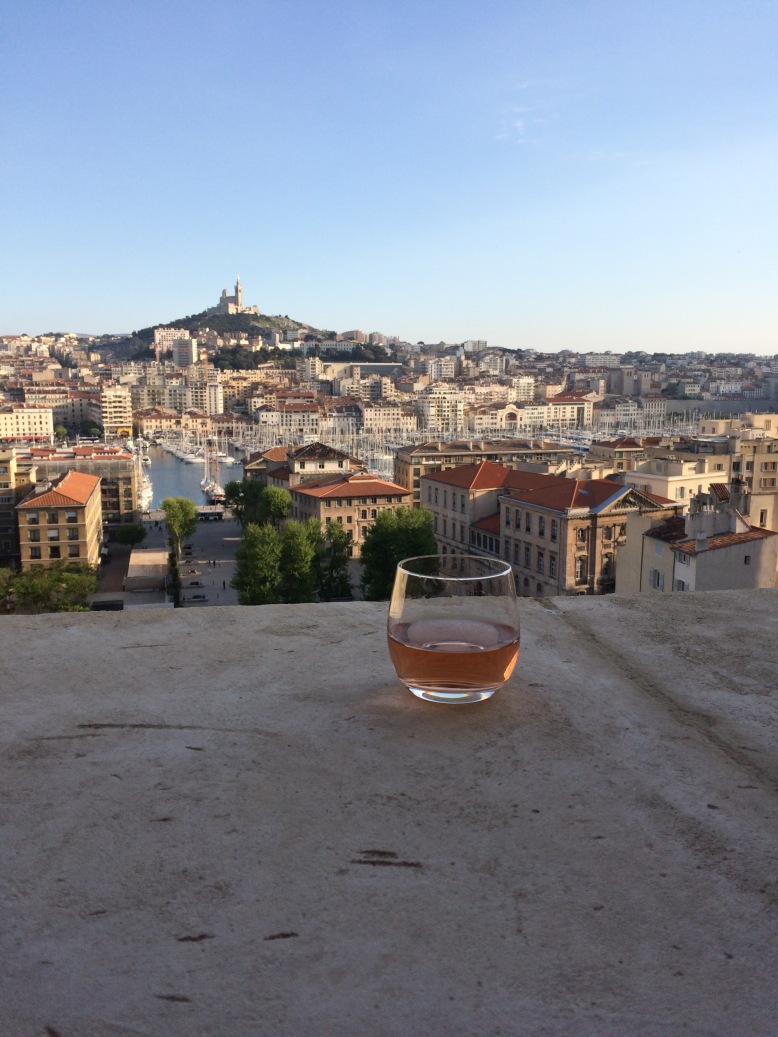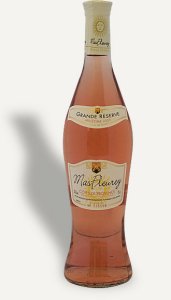
A glass of rose in its spiritual home, Provence
The warmer weather and longer evenings of April and May are a sure sign to me that rosé season has arrived. For those who associate rosé wine with a box of Franzia, and think that all rosés must be sweet, there is a lot to learn. There is a huge range of styles of rosé and it is one of the best food pairing wines out there. Here’s what you need to know:
First, some fun trivia. There are a few ways of making rosé and they have a lot to do with the quality of the end product. The first is called saigneé (bleeding) and is a very traditional method that wineries would use to assist in their goals for red winemaking and also make some quick capital. When red wine grapes are crushed and the juice and skins are fermented (generally in large stainless steel tanks or wooden vats), the skins add the pivotal components of tannin, texture, and color to the wine. If a winemaker wants to increase the effect of the skins on the final wine, after 6-48 hours of soaking the juice on the skins, she can drain a proportion of the juice off the skins which will result in a higher skin to juice ratio within the tank or vat. The resulting lightly colored juice can be fermented into rosé wine. Rosé wine doesn’t need to age the way a rich red wine does, and therefore the winery can put it on the market earlier and get some much needed cash while its red wine sits in barrel waiting to be releaesed. Many old world producers and some new world producers use this method as a normal course of business to this day.
The next method of producing rosé is called direct pressing, which means simply that the wine has been meant for rosé from the start of the winemaking process. This method is used classically in the rosé-heavy region of Provence, France, and in many new world wineries. The red wine grapes are simply directly pressed with the juice gaining some, but not much, color from the skins. They are treated from this pressing as a white grape juice, fermented in cold temperatures and bottled with no aging. The wine will be a pale, rather than bold, pink color.
Finally, what most people think of when they think of rosé is a blend of red wine and white wine. This is in fact exceptionally rare except for in the region of Champagne, where the base wine for the bubbly is a blend of Pinot Noir (red), Pinot Meunier (red), and Chardonnay (white). This method is used infrequently for still rosé production and is not often a sign of good quality.
So rosé is, simply, a red wine with very little color or tannin that can be made to suit whatever style is the aim of the winemaker: dry or sweet, lean or robust, high or low acid. In my opinion the best quality examples are those that are quite dry with high acid; these wines will pair very well with a variety of foods from soft cheeses and grilled shrimp, to roasted chicken or salmon.
How to choose a rosé?

Classic examples hail from the Provence region of France. On the Mediterranean sea, this area is planted to primarily Grenache, a low tannin red wine with ripe red fruit flavors (strawberry, raspberry). Rosé from Provence will typically be almost bone dry, with a pale pink colour and bright red fruit flavors. They are lighter in style and will typically pair well with light cheese or seafood, the typical dish of the region being Bouillabaisse (a tomato based seafood stew). Given that these wines undergo strict production regulations in order to bear the Cotes de Provence AOC (wine appellation), there is a general standard of quality. Look for the classic ‘flute a corset Provençal’ bottle.
If you want a more lush rosé that is still on the drier side, look to the Central Coast of California, where numerous producers make rosé in the saigneé style for the reasons described above. Rosé made here can be made from many different grapes, including Pinot Noir, Syrah, and even Cabernet Sauvignon. Some of my favorites are Laeticia Pinot Noir Rosé, Robert Hall Rosé de Robles (Rhone blend of grapes- Grenache, Cinsault, etc), and Rusack Rosé (a blend). These richer rosés will pair well with heartier foods such as barbecued salmon or roast chicken.
Next week? Some great recipes to pair with rosé. Cheers!
